Presentation
Vomiting, abdominal pain, distension, and oliguria for 3 days.
Patient Data
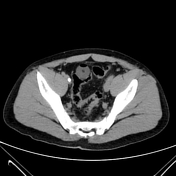

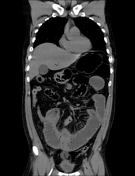

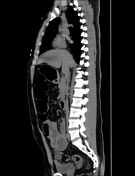

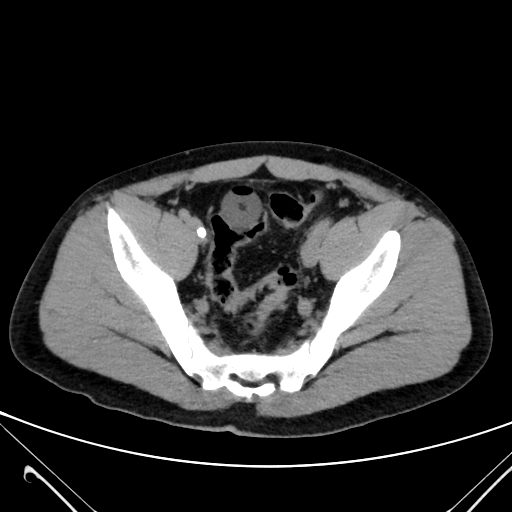
Urgent pelvi-abdo CT without contrast
Dilated small bowel loops with transition zone at the distal ileal loops indicating high-grade distal small bowel loops obstruction probably due to adhesions or strictures.
Incidentally discovered Foley's catheter out the urinary bladder confinement.
Minimal free fluid in the pelvis due to Foley catheter malposition.
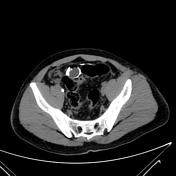

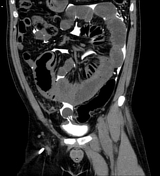



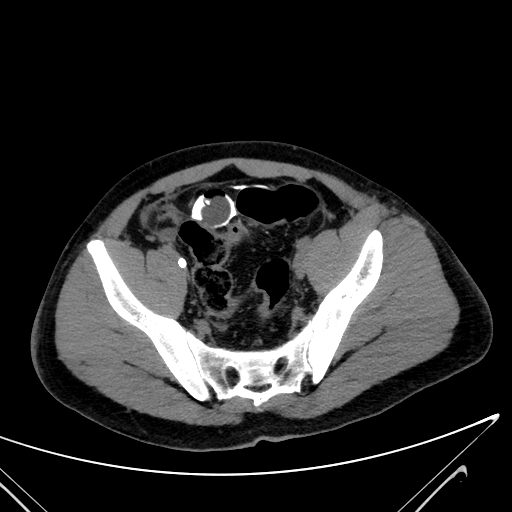
The Foley catheter is seen penetrating the superior wall of the urinary bladder with associated mild free fluid in the pelvis and the subhepatic region.

Ascending cystourethrogram postoperative
Injection of about 400-500 ml contrast with slight irregularity seen at the upper right lateral border likely site of surgical repair, no leakage, or reflux detected at the time of the scan.
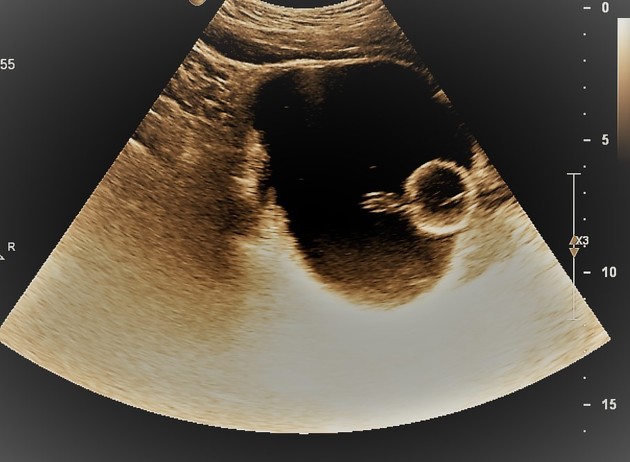
Ultrasound confirms the focal urinary bladder wall irregularity (site of surgical repair ) with no pelvic collection.
Case Discussion
The mechanism behind peritoneal adhesions formation is still not well understood, however, is thought to be caused by a chronic inflammatory process. Small bowel obstruction (SBO) is the most common complication of peritoneal adhesions.
Spontaneous urinary bladder rupture is a rare urological emergency. It is usually secondary to an underlying pathology, whatever the cause, nearly always there is an underlying pathology that weakens the bladder wall is present to precipitate a perforation. Bladder perforation due to intra-abdominal adhesions has never been reported but maybe something to consider when other causes of peritonitis have been excluded.
In our case, the underlying cause is a chronic infection which is one of the less common causes of perforation. Laparoscopic exploration for intestinal obstruction adhesiolysis, resection anastomosis, and a colostomy was done. Also urinary bladder repair and bladder histopathology showing chronic inflammatory changes, no malignancy, no fibrosis, or granuloma.




 Unable to process the form. Check for errors and try again.
Unable to process the form. Check for errors and try again.